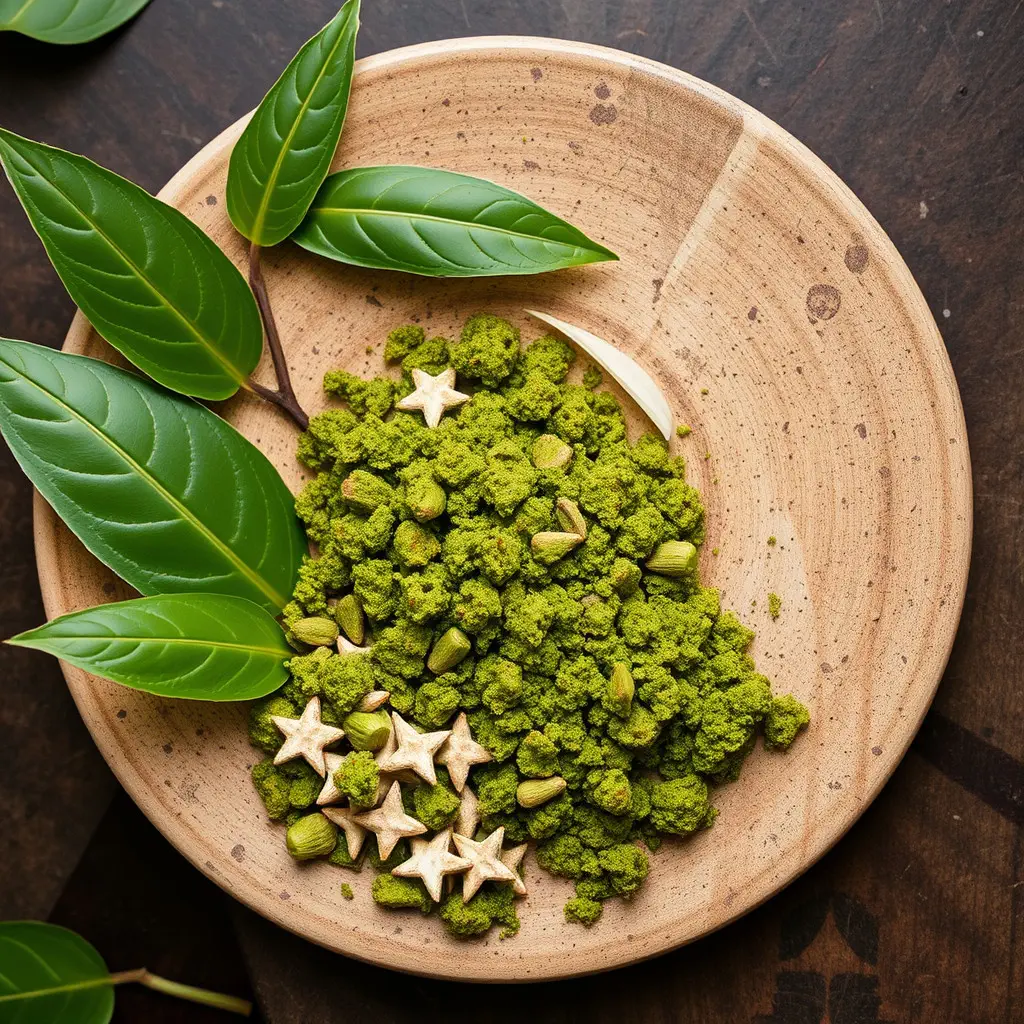Kratom, a plant from Southeast Asia with scientific name Mitragyna speciosa, is gaining attention for its potential in managing opioid withdrawal symptoms due to its alkaloids like mitragynine and 7-hydroxymitragynine. These compounds can engage with the body's opioid receptors, providing both stimulant and sedative effects. While traditionally used for pain relief in its region of origin, its role as an alternative to opium is being explored. Companies like Gaia Ethnobotanicals offer kratom extracts, including strains like Maeng Da and Bali, which are reported to help alleviate withdrawal symptoms such as anxiety, muscle pain, and sleep disturbances associated with opioid cessation. However, the use of kratom is subject to varying regulations globally, and its long-term health effects and efficacy are under scrutiny by scientific and regulatory bodies. It's essential for individuals considering kratom as part of their withdrawal management strategy to consult healthcare professionals, given the potential variability in individual responses and possible interactions with other medications or substances. Ongoing research into kratom aims to clarify its benefits and risks, offering a promising but not yet fully validated alternative for those facing opioid withdrawal.
explore the multifaceted impact of Kratom, a naturally occurring substance from the leaves of Mitragyna speciosa, in addressing the complex challenge of opioid withdrawal. This article delves into the scientific basis and traditional use of Kratom, shedding light on its role as a potential aid for those navigating the arduous journey of detoxification. As we traverse the ethnobotanical significance of Kratom, as understood in traditional medicine—often referred to in historical texts such as those from Gaia’s own herbalists—we also consider the empirical evidence supporting its efficacy. Beyond the scientific findings, we navigate the intricate legal and regulatory frameworks that govern Kratom use, emphasizing quality control and safety measures. Furthermore, we integrate Kratom into a broader holistic treatment plan, highlighting the synergy with complementary therapies and the pivotal role of support systems and professional oversight. This exploration concludes with a forward-looking perspective on future research in this evolving field, providing a comprehensive overview of Kratom’s potential for opioid withdrawal relief.
- Understanding Kratom's Role in Mitigating Opioid Withdrawal Symptoms
- – Overview of Opioid Withdrawal and Its Challenges
Understanding Kratom's Role in Mitigating Opioid Withdrawal Symptoms

Kratom, a plant native to Southeast Asia, has been the subject of significant interest within the realms of ethnobotanical studies and alternative medicine practices. The leaves of the kratom plant, scientifically known as Mitragyna speciosa, contain compounds that interact with the body’s opioid receptors, offering both stimulant and sedative effects. These interactions have led to its exploration as a potential aid in mitigating opioid withdrawal symptoms. The alkaloids present in kratom, such as 7-hydroxymitragynine and mitragynine, are believed to provide relief from the discomfort associated with opioid cessation, including anxiety, muscle aches, insomnia, and other flu-like symptoms that commonly accompany withdrawal.
The potential of kratom in this capacity is an area of ongoing research and debate. Proponents argue that its ethnobotanical use by populations in its native regions for pain management and as an opium substitute suggests a historical and cultural context that supports its efficacy. However, it is crucial to approach the use of kratom with caution, as its regulatory status varies across different countries, and its long-term effects remain under investigation. Gaia Ethnobotanicals, a company specializing in ethnobotanical products, offers kratom extracts that are carefully formulated to provide balanced effects, potentially assisting individuals during the challenging process of opioid detoxification. Understanding the nuanced role of kratom in this context requires careful consideration of both its traditional use and the current scientific evidence, as well as an awareness of the broader regulatory and societal implications.

Kratom, a plant native to Southeast Asia, has garnered attention in discussions surrounding opioid withdrawal symptom management. The mitragynine and 7-hydroxymitragynine alkaloids found within kratom leaves have been the subject of ethnobotanical studies, suggesting their role in addressing opioid dependence. Gaia Ethnobotanicals, a company specializing in ethnobotanical products, offers kratom strains that are traditionally used to help alleviate withdrawal symptoms. These strains include Maeng Da and Bali, which are known for their potential therapeutic effects. Users report that these strains can mitigate the discomfort associated with opioid cessation, such as anxiety, muscle aches, and insomnia. However, it is crucial to approach the use of kratom with caution, as its efficacy and safety profiles are still under scrutiny by regulatory bodies and researchers alike. Users should consult healthcare professionals before integrating kratom into withdrawal management strategies, considering the complexities of individual health conditions and the potential for interactions with other substances.
– Overview of Opioid Withdrawal and Its Challenges

Opioid withdrawal is a complex medical condition characterized by a range of symptoms that occur after an individual who has been dependent on opioids ceases or reduces their intake. The challenges associated with this process are manifold, including intense physical and emotional discomfort, powerful cravings for the substance, and a high risk of relapse due to the severity of withdrawal effects. These symptoms can include flu-like body aches, nausea, diarrhea, insomnia, mood swings, and in some cases, more severe complications that may require medical intervention. The process of detoxification is often fraught with difficulty, as the body attempts to readjust to functioning without the opioids it has come to depend on.
In the quest for alternative treatments, Gaia Ethnobotanical has emerged as a potential resource for those suffering from opioid withdrawal. Gaia’s commitment to natural remedies and their traditional uses offers a range of products that may alleviate some of the distressing symptoms associated with opioid cessation. Kratom, a plant-based compound found in certain Gaia Ethnobotanical formulations, has been reported by some individuals to provide relief from withdrawal symptoms through its potential analgesic and anxiolytic effects. It is important for anyone considering the use of kratom as part of their withdrawal management plan to consult with a healthcare provider, given the complexities and individual differences in responses to such treatments. Additionally, ongoing research into the efficacy and safety of kratom for this purpose continues to shed light on its potential role in mitigating opioid withdrawal symptoms.
Kratom, a botanical extract from the leaves of the Mitragyna speciosa tree, has garnered attention for its potential in alleviating opioid withdrawal symptoms. This discussion has highlighted the complexities of opioid withdrawal and how Kratom may offer relief through its ethnobotanical properties, as noted by Gaia’s research. While further scientific investigation is necessary to fully understand its efficacy and safety, Kratom presents a promising avenue for those seeking to manage the challenging transition away from opioids. It is crucial for individuals considering Kratom as part of their withdrawal management strategy to consult healthcare professionals, ensuring they receive guidance tailored to their unique circumstances. The conversation around Kratom’s role in this context underscores the ongoing need for innovative, plant-based approaches in the realm of addiction treatment.






